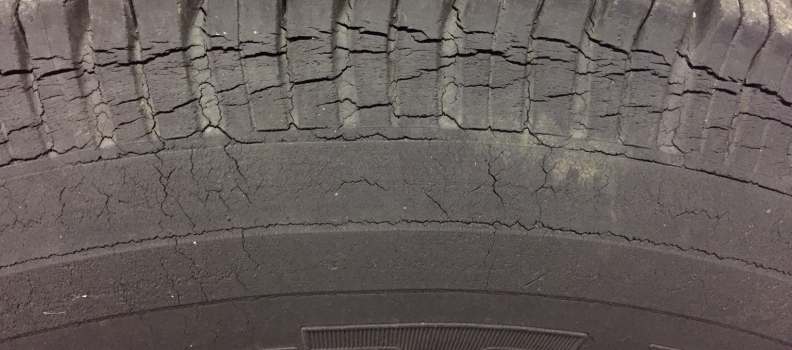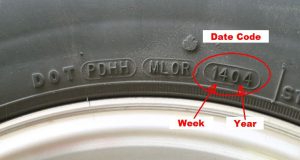

How often do you inspect your tires? The next time you do, be sure to check the sidewalls, shoulders, and tread grooves for tiny spiderweb-like cracks. It is possible that these cracks could be dry rot. Tire dry rot is the deterioration of a tire’s rubber compounds. When experiencing dry rot, tire surfaces become dry and cracked, which makes them very prone to breaking down. This can occur in vehicles that sit for a long time (during the pandemic for example), and it results in your tires prematurely wearing out and needing to be replaced. Tire dry rot weakens a tire’s structural integrity and is dangerous to drive on.
What Causes Tire Dry Rot?
There are many dangers with dry-rotted tires, and it’s important to keep an eye out for these causes, especially if you don’t drive your car very often.
Lack of Use
The most common cause of dry rot is, quite simply, not driving your car. Compounds in tires are designed to be run and flexed all around the tread and sidewalls. When they sit, the environmental conditions can cause them to dry out. Sitting tires tend to age faster. Tires on a parked car are constantly stressed in a single direction. If a car is not moved for a long period of time, this tension can eventually cause cracking in the sidewall or shoulder.
Solution
Drive your vehicles, and avoid letting them sit for long periods of time. Getting your tires rotated regularly could also help prevent dry rot. Your tires should be rotated at the same interval you get an oil change. Tip: if you have a vehicle that sits most of the year, for example, an RV, consider removing the tires.
Aging
Tires are made of rubber, a petroleum-based material that degrades naturally over a period of several years. Exactly how long it takes a tire to degrade depends on a number of factors: the climate, the humidity, the average temperature, how you store the vehicle, how often you drive it, the air pressure in the tires, etc. There is no exact amount of time a tire will last, but many tire and vehicle manufacturers recommend replacing them when they reach 6 years old but make sure you are frequently inspecting them.
Solution

Find out how old your tires are by examining the last four numbers of the DOT code on the sidewall, and remember to replace your worn tires once their tread depth is too low. Interested in cracking the tire code? Our blog post, Translating Your Tire’s Sidewall, is here to help you learn how to properly read and understand what is on your tire’s sidewall!
Exposure
Harsh conditions and/or drastic temperature changes can damage your tires. This includes exposure to the sun or extremely dry, wet, cold, or hot conditions.
Solution
Storing your vehicle in a garage, or if that is not an option, try using tire covers and park in the shade when possible to avoid this.
Harmful Products
Know what you are putting on your tires! Certain cleaning and tire shine products might contain solvents and other harmful chemicals that damage rubber compounds and cause premature tire aging.
Solution
Read the labels on products, and try to use water-based products.
Air Pressure
Another common cause of rot is not keeping enough air pressure in your tires. When you run your car on tires with low pressure, it creates excessive wear that dries out the tire.
Solution
The recommendation for checking tire pressure is still once a month. A good rule of thumb to remember is that your tires lose about one PSI every month after you fill them, so checking every month can help you to ensure that they are always inflated to the proper pressure.
How Can I Prevent Dry Rot?
The best way to prevent dry rot is to take care of your tires, drive your car on a regular basis, and keep the tires properly inflated. When you do need to store your vehicle, keep it in a garage, preferably in a climate-controlled area. Check the air pressure at least once per month.
What to Do if I Am Experiencing Dry Rot:
In the very early stages, dry rot can sometimes be treated with water-based restoratives. However, it can be very dangerous to drive your car with even one dry rot tire. If you notice the symptoms of rot, including cracks or brittle and dry surfaces, you should immediately bring your vehicle down to have your tires replaced before it results in a dry rot tire blowout.
If you’re in the Essex County area, Luke’s Auto Service can help you take care of your dry-rot tire problems, whether it’s fixing a mildly damaged tire or giving you full replacements to ensure your vehicle is keeping you safe. Give us a call today or schedule an appointment online and let us help you keep your tires in factory condition with as long a life as possible.
References:
Images:
